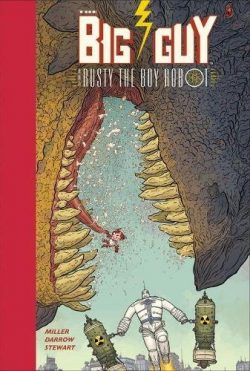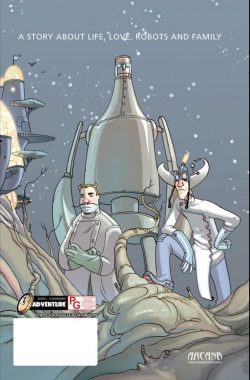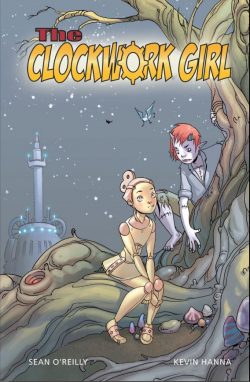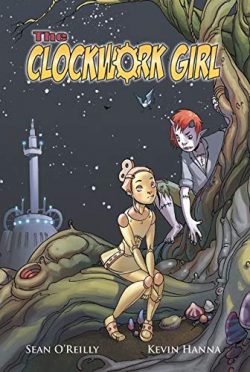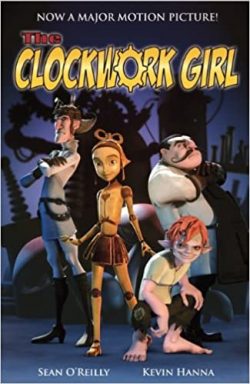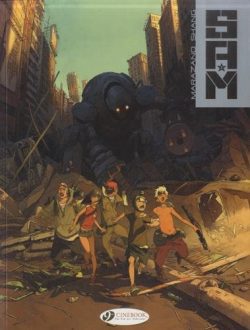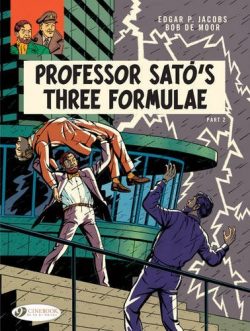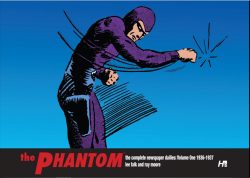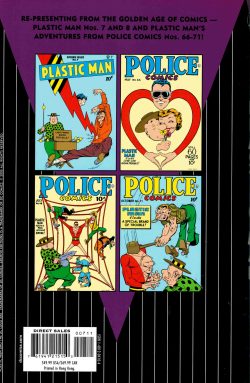

By Jack Cole, with Joe Millard, Gwen Hansen, John Spranger, Alex Kotzky & various (DC Comics)
ISBN: 978-1-4012-0413-6 (HB)
Jack Cole was one of the most uniquely gifted talents of American comics’ Golden Age. Before moving into mature magazine and gag markets, he originated landmark tales in horror, true crime, war, adventure and especially superhero comicbooks, and his incredible humour-hero Plastic Man remains an unsurpassed benchmark of screwball costumed hi-jinks: frequently copied but never equalled. It was a glittering career of distinction which Cole was clearly embarrassed by and unhappy with.
In 1954 Cole quit comics for the lucrative and prestigious field of magazine cartooning, swiftly becoming a household name when his brilliant watercolour gags and stunningly saucy pictures began regularly running in Playboy from the fifth issue.
Cole eventually moved into the lofty realms of newspaper strips and, in May 1958, achieved his life-long ambition by launching a syndicated newspaper strip, the domestic comedy Betsy and Me.
On August 13th 1958, at the peak of his greatest success, he took his own life. The reasons remain unknown.
Without doubt – and despite his other triumphal comicbook innovations such as Silver Streak, Daredevil, The Claw, Death Patrol, Midnight, Quicksilver, The Barker, The Comet and a uniquely twisted and phenomenally popular take on the crime and horror genres – Cole’s greatest creation and contribution was the zany Malleable Marvel who quickly grew from a minor back-up character into one of the most memorable and popular heroes of the era.
Plastic Man debuted at the back of Police Comics #1 (August 1941) as a slight, comedy filler feature amongst the more serious Cops ‘n’ Robbers fare but “Plas†was the wondrously perfect fantastic embodiment of the sheer energy, verve and creativity of an era when anything went and comics-makers were prepared to try out every outlandish idea…
Eel O’Brian is a brilliant career criminal wounded during a factory robbery, soaked by a vat of spilled acid and callously abandoned by his thieving buddies. Left for dead, he is saved by a monk who nurses him back to health and proves to the hardened thug that the world is not filled with brutes and vicious chisellers after a fast buck.
His entire outlook altered and now blessed with incredible elasticity, Eel resolves to put his new powers to good use: cleaning up the scum he used to run with. Creating a costumed alter ego, he starts a stormy association with the New York City cops before being recruited as a most special agent of the FBI…
He soon reluctantly adopts the most unforgettable comedy sidekick in comics history. Woozy Winks is a dopey, indolent slob and utterly amoral pickpocket who once – accidentally – saved a wizard’s life. He was blessed in return with a gift of invulnerability: all the forces of nature will henceforth protect him from injury or death – if said forces feel like it…
After utterly failing to halt the unlikely untouchable’s subsequent crime spree, Plas appeals to the scoundrel’s sentimentality and, once Woozy tearfully repents, is compelled to keep him around in case he ever strays again. The oaf is slavishly loyal but perpetually back-sliding into pernicious old habits…
Equal parts Artful Dodger and Mr Micawber, with the verbal skills and intellect of Lou Costello’s screen persona or the over-filled potato sack he resembles, Winks is the perfect foil for Plastic Man: a lazy, greedy, morally bankrupt reprobate with perennially sticky fingers who gets all the best lines, possessing an inexplicable charm and habit of finding trouble. It was always the ideal marriage of inconvenience…
Despite being a fan favourite for decades and regularly reinvented for both comics and television Plas, is woefully underrepresented in the archival reprint realm. These long out-of-print Archive editions are the only seriously curated collections of his outlandish adventures, but hope springs eternal for new editions or – at the very least – a digital collection someday…
Covering May to October 1947, this sublimely sturdy seventh full-colour hardback exposes more eccentrically exaggerated exploits of the elastic eidolon from Plastic Man #7 and 8 and his regular monthly beat in Police Comics #66-71. Before the hilarious action kicks off, Bud Plant offers a historical assessment of Cole and his collaborators in the Foreword after which the power-packed contents of Plastic Man #7 (Spring 1947) commence with ‘The Evil Doctor Volt’by scripter Joe Millard and Cole, wherein an elite criminal genius’ plans are continually scuppered by common uneducated crooks and the world’s dumbest hero sidekick, after which Woozy’s eagerness to do good deeds lands him on a treasure-hunter’s ship after he’s ratcheted by a sinister seductress pressganging innocent men into a ‘One-Way Voyage of Villainy’ (by Cole with Millard & Alex Kotzky)…
Woozy had his own regular solo feature in Plastic Man, and here the Stalwart Simpleton seek to improve his deductive abilities and crimebusting skills at ‘Professor Rudge’s Mind-Training School’ (Gwen Hansen & Cole), Perhaps, he should have asked where teacher got all his knowledge and experience from…
Prose science fiction tale ‘The Glass Planet’ leads back to comical comics as Millard & Cole reveal ‘The Billboard’s Tale’, closing the issue with a skyscraper ad display detailing a war between marketing companies that endangered the entire city and made the signage feel really special again…
Cole expended most of his creative energies and multitalented attentions on the monthly Police Comics and in #66, depicts Plas trying to get the goods on ruthless construction cheat Naughty Nikko as he skimps on a new West River Tunnel. Everybody would be far better served watching stylish concubine ‘Beauteous Bessie’. Woozy sure is…
For #67, our heroes are put through the wringer by jolly joker ‘The Gag Man’ whose love of kids extends to their worth as police diversions and human shields after which Plastic Man #8 opens with ‘The Hot Rod’ (Hansen & Cole) wherein a contract killer successfully eludes all efforts to catch him until injected by one victim with a serum that turns him into a human firebrand before ‘Concerto for Murder’ (Hansen & Cole) sees Woozy join an orchestra just in time to see the conductor murdered in full view of everyone. Happily, supportive Plas is on hand…
Winks’ solo strip – by Hansen & John Spranger – sees the affable goon befriend a crazy artist who can instantly change the appearance of everything by covering it with ‘The Mystery Paint’, whilst anonymous prose vignette ‘Doomsby’s Doom’explodes a monster myth threatening a plantation crop, after which the comic concludes with the tragedy of deranged criminal Mr. Uglee who offers a huge pay-out to the person who can turn himself into ‘The Homeliest Man in the World’(Millard & Spranger)…
Police Comics #68 (July 1947) follows the FBI star – and Woozy – as he trails an escaped criminal mastermind to California and is sucked into showbiz in ‘Plas Goes to Hollywood’ before returning home to meet his match in #69’s ‘Stretcho, the India Rubber Man’: a murderous performer who frames the hero at the behest of vengeful convicts.
Spies frantically, lethally hunting a hidden secret shade #70’s ‘It’s an Ill Wind that Blows the Hat’, with Woozy sporting a string of chapeaus likely to lose him his head before the manic mayhem pauses once more with a case in cowboy country as ‘East is East and West is West’ finds FBI tenderfeet Plas and Woozy hunting rustlers and stamp-stealers and finding an East Coast bigshot who’s gone native…
Augmented by all the astoundingly ingenious gag-packed covers, this is a true masterclass of funnybook virtuosity: still exciting, breathtakingly original, thrilling, witty, scary, visually outrageous and pictorially intoxicating eight decades after Jack Cole first put pen to paper.
Plastic Man is a unique creation and this is a magical experience comics fans should take every opportunity to enjoy, so let’s pray someone at DC is paying attention…
© 1946, 1947, 2004 DC Comics. All Rights Reserved.
29th Plas 7 (Comedy/DC Superhero/Humour/Plastic Man)
Plastic Man Archives volume 7
By Jack Cole, with Joe Millard, Gwen Hansen, John Spranger, Alex Kotzky & various (DC Comics)
ISBN: 978-1-4012-0413-6 (HB)
Jack Cole was one of the most uniquely gifted talents of American comics’ Golden Age. Before moving into mature magazine and gag markets, he originated landmark tales in horror, true crime, war, adventure and especially superhero comicbooks, and his incredible humour-hero Plastic Man remains an unsurpassed benchmark of screwball costumed hi-jinks: frequently copied but never equalled. It was a glittering career of distinction which Cole was clearly embarrassed by and unhappy with.
In 1954 Cole quit comics for the lucrative and prestigious field of magazine cartooning, swiftly becoming a household name when his brilliant watercolour gags and stunningly saucy pictures began regularly running in Playboy from the fifth issue.
Cole eventually moved into the lofty realms of newspaper strips and, in May 1958, achieved his life-long ambition by launching a syndicated newspaper strip, the domestic comedy Betsy and Me.
On August 13th 1958, at the peak of his greatest success, he took his own life. The reasons remain unknown.
Without doubt – and despite his other triumphal comicbook innovations such as Silver Streak, Daredevil, The Claw, Death Patrol, Midnight, Quicksilver, The Barker, The Comet and a uniquely twisted and phenomenally popular take on the crime and horror genres – Cole’s greatest creation and contribution was the zany Malleable Marvel who quickly grew from a minor back-up character into one of the most memorable and popular heroes of the era.
Plastic Man debuted at the back of Police Comics #1 (August 1941) as a slight, comedy filler feature amongst the more serious Cops ‘n’ Robbers fare but “Plas†was the wondrously perfect fantastic embodiment of the sheer energy, verve and creativity of an era when anything went and comics-makers were prepared to try out every outlandish idea…
Eel O’Brian is a brilliant career criminal wounded during a factory robbery, soaked by a vat of spilled acid and callously abandoned by his thieving buddies. Left for dead, he is saved by a monk who nurses him back to health and proves to the hardened thug that the world is not filled with brutes and vicious chisellers after a fast buck.
His entire outlook altered and now blessed with incredible elasticity, Eel resolves to put his new powers to good use: cleaning up the scum he used to run with. Creating a costumed alter ego, he starts a stormy association with the New York City cops before being recruited as a most special agent of the FBI…
He soon reluctantly adopts the most unforgettable comedy sidekick in comics history. Woozy Winks is a dopey, indolent slob and utterly amoral pickpocket who once – accidentally – saved a wizard’s life. He was blessed in return with a gift of invulnerability: all the forces of nature will henceforth protect him from injury or death – if said forces feel like it…
After utterly failing to halt the unlikely untouchable’s subsequent crime spree, Plas appeals to the scoundrel’s sentimentality and, once Woozy tearfully repents, is compelled to keep him around in case he ever strays again. The oaf is slavishly loyal but perpetually back-sliding into pernicious old habits…
Equal parts Artful Dodger and Mr Micawber, with the verbal skills and intellect of Lou Costello’s screen persona or the over-filled potato sack he resembles, Winks is the perfect foil for Plastic Man: a lazy, greedy, morally bankrupt reprobate with perennially sticky fingers who gets all the best lines, possessing an inexplicable charm and habit of finding trouble. It was always the ideal marriage of inconvenience…
Despite being a fan favourite for decades and regularly reinvented for both comics and television Plas, is woefully underrepresented in the archival reprint realm. These long out-of-print Archive editions are the only seriously curated collections of his outlandish adventures, but hope springs eternal for new editions or – at the very least – a digital collection someday…
Covering May to October 1947, this sublimely sturdy seventh full-colour hardback exposes more eccentrically exaggerated exploits of the elastic eidolon from Plastic Man #7 and 8 and his regular monthly beat in Police Comics#66-71. Before the hilarious action kicks off, Bud Plant offers a historical assessment of Cole and his collaborators in the Foreword after which the power-packed contents of Plastic Man #7 (Spring 1947) commence with ‘The Evil Doctor Volt’by scripter Joe Millard and Cole, wherein an elite criminal genius’ plans are continually scuppered by common uneducated crooks and the world’s dumbest hero sidekick, after which Woozy’s eagerness to do good deeds lands him on a treasure-hunter’s ship after he’s ratcheted by a sinister seductress pressganging innocent men into a ‘One-Way Voyage of Villainy’ (by Cole with Millard & Alex Kotzky)…
Woozy had his own regular solo feature in Plastic Man, and here the Stalwart Simpleton seek to improve his deductive abilities and crimebusting skills at ‘Professor Rudge’s Mind-Training School’ (Gwen Hansen & Cole), Perhaps, he should have asked where teacher got all his knowledge and experience from…
Prose science fiction tale ‘The Glass Planet’ leads back to comical comics as Millard & Cole reveal ‘The Billboard’s Tale’, closing the issue with a skyscraper ad display detailing a war between marketing companies that endangered the entire city and made the signage feel really special again…
Cole expended most of his creative energies and multitalented attentions on the monthly Police Comics and in #66, depicts Plas trying to get the goods on ruthless construction cheat Naughty Nikko as he skimps on a new West River Tunnel. Everybody would be far better served watching stylish concubine ‘Beauteous Bessie’. Woozy sure is…
For #67, our heroes are put through the wringer by jolly joker ‘The Gag Man’ whose love of kids extends to their worth as police diversions and human shields after which Plastic Man #8 opens with ‘The Hot Rod’ (Hansen & Cole) wherein a contract killer successfully eludes all efforts to catch him until injected by one victim with a serum that turns him into a human firebrand before ‘Concerto for Murder’ (Hansen & Cole) sees Woozy join an orchestra just in time to see the conductor murdered in full view of everyone. Happily, supportive Plas is on hand…
Winks’ solo strip – by Hansen & John Spranger – sees the affable goon befriend a crazy artist who can instantly change the appearance of everything by covering it with ‘The Mystery Paint’, whilst anonymous prose vignette ‘Doomsby’s Doom’explodes a monster myth threatening a plantation crop, after which the comic concludes with the tragedy of deranged criminal Mr. Uglee who offers a huge pay-out to the person who can turn himself into ‘The Homeliest Man in the World’(Millard & Spranger)…
Police Comics #68 (July 1947) follows the FBI star – and Woozy – as he trails an escaped criminal mastermind to California and is sucked into showbiz in ‘Plas Goes to Hollywood’ before returning home to meet his match in #69’s ‘Stretcho, the India Rubber Man’: a murderous performer who frames the hero at the behest of vengeful convicts.
Spies frantically, lethally hunting a hidden secret shade #70’s ‘It’s an Ill Wind that Blows the Hat’, with Woozy sporting a string of chapeaus likely to lose him his head before the manic mayhem pauses once more with a case in cowboy country as ‘East is East and West is West’ finds FBI tenderfeet Plas and Woozy hunting rustlers and stamp-stealers and finding an East Coast bigshot who’s gone native…
Augmented by all the astoundingly ingenious gag-packed covers, this is a true masterclass of funnybook virtuosity: still exciting, breathtakingly original, thrilling, witty, scary, visually outrageous and pictorially intoxicating eight decades after Jack Cole first put pen to paper.
Plastic Man is a unique creation and this is a magical experience comics fans should take every opportunity to enjoy, so let’s pray someone at DC is paying attention…
© 1946, 1947, 2004 DC Comics. All Rights Reserved.

